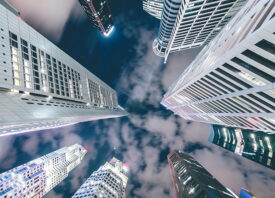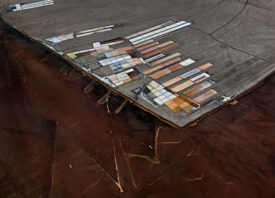Search this site
Striking Photos of the Human Torso Stretched Out Like Canvas
Pennsylvania-based photographer June Yong Lee’s black-and-white composite photographs artfully take the human torso and flatten and spread it out so you can see at a glance how life marks the skin. They are occasions to consider the surface attributes that make a person a person, and they present our largest organ as a hide, reminding us that we are all just animals—and vulnerable ones at that. Lee’s photographs are striking in their ability to go from universal to personal, and from slightly creepy to sexy.
As a teen, no doubt, Lee had a profound interest in skin when he left homogenous South Korea. But his interest deepened when he arrived in the United States, a place noted for its attention to skin and the color of it. His models are strangers (Lee finds them on places like Craigslist) and remain anonymous.
Lee’s process, skillful as it is, is simple enough. DSLR in hand, he circles his subject, snapping as he goes. Later, using Photoshop, he seamlessly blends the individual exposures of 3-D flesh into the flat finished product. In the process he removes the color from the skin, the volume from bones and flesh, and enhances the various marks that time and tattoo leave on skin. His aim is to show how skin somehow adds up to identity. His focus is solely on surface texture, the skin becoming as flat and communicative, in Lee’s view, as paper. “I believe who [my models] are is already written on their skin,” he says.
But you can’t tell all that much about the people Lee photographs. Assumptions turn to nonsense when you try to identify his models. A lens can’t record bloodlines or see class, and it can only guess at age. It records a few facts: wear and tear, moles, and marks left by surgeons and tattoo artists. Perhaps that is Lee’s point: skin, assumed to be the essence of race and a good part of identity, is an unreliable guide—without some context. Race and identity, then, are figments of the social imagination.
With clinical aplomb, he photographs what is famously the largest organ of the human body, which incidentally weighs 8 pounds, and not at all incidentally measures 22 square feet. Lee’s startlingly tactile photographs are a kind of Mercator projection—both sexy and disturbing—of experience itself.
This post was contributed by photographer Pelle Cass.












